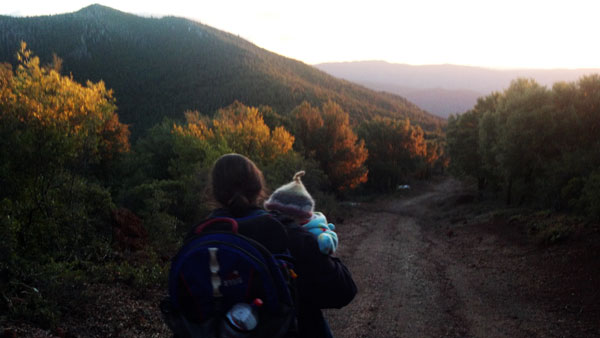How do I know this? It’s a picture I was asked to tack to a spot in my mind over and over until it stuck. Now that three digit number lives on a skinny black platform right above 117 and right below 91. If I had learned my 7’s 8’s and 9’s this way, who knows where I’d be now?
I never got past my sixes in multiplication. I couldn’t bear the tedium. I had a way of counting on my fingers by pressing them imperceptibly against my scalp as I crouched over my work. I was an excellent student, but secretly a math dum-dum. The thing with math skills is that if you’re reasonably competent in other areas, you can slide by with various crutches – until you can’t. For me, that point was freshman algebra, when math finally became interesting and I began failing. I loved the introduction of letters, the symmetry of equations, the process of simplifying. I understood the concepts but I got too many details wrong. Since I didn’t know in my bones what 6 times 8 was, I couldn’t recognize when my calculations were going awry. Jacob, always my equal in school shot past me to Physics and pre-Calculus. I skipped off to France.
Not “getting” math didn’t ruin my chances for higher education. Writing got me through what I needed. Also, our culture seems to expect most kids to do poorly in math, especially the girls. But my math handicap did neatly remove the possibility of pursuing anything outside the arts. I bring my own experience up only to highlight the conflict in our culture and the absence of a strategy in our educational system. Certainly our standards have been raised since I went to an infamously failing public school system thirty years ago. But the strategies for meeting those standards are missing. Especially when it comes to math.
As every parent of a third grader knows, though the teaching of concepts happens at school, the sweat and struggle involved in memorizing the multiplication facts is left to the parents. And last I checked, we are not the most qualified bunch of number drillers.
I tried everything with my son: flashcards (store-bought and handmade), beans, songs, dances, games, bribes, star charts, computer programs, verbal drilling, all resulting in good old fashioned sighs of disappointment and frustration. I was grasping and failing. By third grade we knew our son had a learning disability, further complicating matters. His processing is slower than typical kids, his working memory is challenged, but otherwise we don’t have a “diagnosis” of his difficulty. And it’s not like he was left to his own devices. His teacher had him pulled out for one on one instruction in math since the class was on entirely different material. His tutor was devoted, creative, resourceful. But after a year of this attentive instruction, he was stuck in a loop of forgetting. He’s in the fifth grade still doing 2nd grade work.
I began to ask what, beyond re-mediating, could be done for his math? What is out there to help kids who don’t get numbers? I asked every therapist, teacher, and special education person I could find. No one had an answer, beyond IXL or Khan Academy (yes, I know of these) How we learn math, it turns out, is little understood. In a follow-up meeting with the head of special education curriculum for our district, I was told “Math just hasn’t been a priority in the past ten years.”
Returning to the image in my brain of a house with nine rooms where 13, 26, 39, 52, 65, 78, 91, 104, 117 live, I have found the answer. David Berg, Ed. has developed powerful math pedagogy that has the potential to reach every kind of math learner. Instead of creating a curriculum, he started the Making Math Real Institute where he and Michael Curry, his associate director, teach teachers, resource specialists, and thankfully, parents, how to teach math. The strategy I learned for memorizing times facts is just one aspect of the program, but an important one, called “Nine Lines.” As with every part of Making Math Real, it’s based on sound cognitive neuroscience research about brain functioning. It reminds me of the “Memory Palace” technique used in Ancient Greece. I will not attempt to address the science of Making Math Real in this post, but essentially, Nine Lines optimizes our ability to “image” information in a specific location.
I tried out the technique on my two daughters, both pretty typical learners, and they got it. Now my fourth grade daughter asks for more every few days as she ratchets through her times facts. She feels empowered, she tells me. She’s learned a way to remember. Then I tried it on my son. He made more mistakes than the girls did, but he too found the images of the numbers were fixed where we had tacked them in his brain. Most importantly, he enjoyed the exercise. He felt smart in a way he rarely does.
The different brain (disabled, slow, fast, injured, genius) is a good place to learn about the typical brain. I have learned so much more about my typical self and my typical kids from the therapists, special ed teachers who have worked with our special needs son. Because, of course, none of us fit quite perfectly into the system. I have found something that is going to give my son the best chance of re-joining his classroom by middle school and doing what he wants in life. And I am confident this approach will give my daughters a different outlook on their own intelligence as well. Face it, math skills are at the root of what we all call, “smartness.” And our country ranks 25th in the world for math. Arne Duncan should know David Berg.


 Follow
Follow